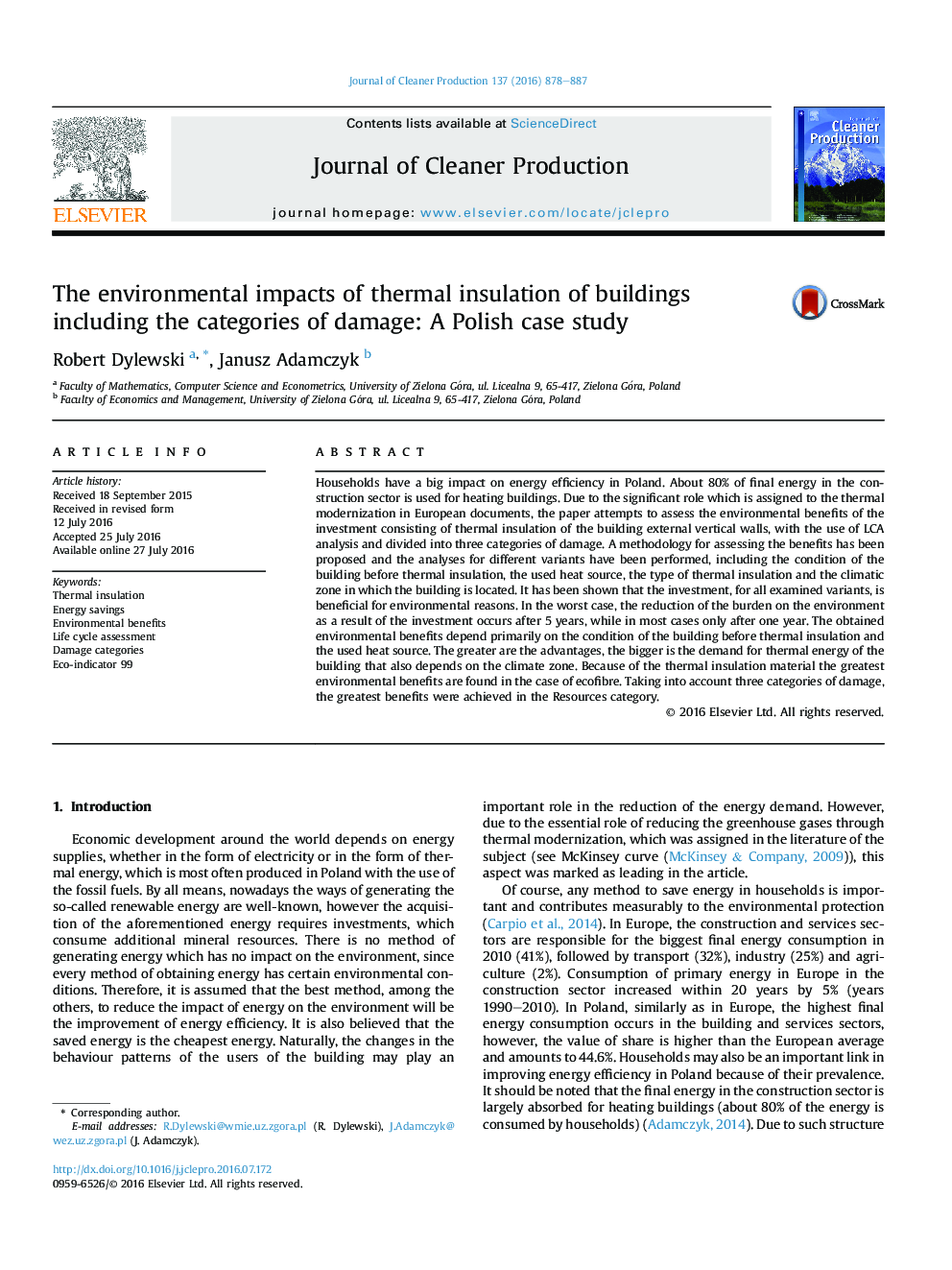| کد مقاله | کد نشریه | سال انتشار | مقاله انگلیسی | نسخه تمام متن |
|---|---|---|---|---|
| 8101003 | 1522114 | 2016 | 10 صفحه PDF | دانلود رایگان |
عنوان انگلیسی مقاله ISI
The environmental impacts of thermal insulation of buildings including the categories of damage: A Polish case study
ترجمه فارسی عنوان
اثرات زیست محیطی عایق حرارتی ساختمانها از جمله دسته های آسیب: مطالعه موردی لهستان
دانلود مقاله + سفارش ترجمه
دانلود مقاله ISI انگلیسی
رایگان برای ایرانیان
کلمات کلیدی
عایق حرارتی، ذخیره انرژی، مزایای زیست محیطی، ارزیابی چرخه حیات، دسته های خسارت شاخص اقتصادی 99،
موضوعات مرتبط
مهندسی و علوم پایه
مهندسی انرژی
انرژی های تجدید پذیر، توسعه پایدار و محیط زیست
چکیده انگلیسی
Households have a big impact on energy efficiency in Poland. About 80% of final energy in the construction sector is used for heating buildings. Due to the significant role which is assigned to the thermal modernization in European documents, the paper attempts to assess the environmental benefits of the investment consisting of thermal insulation of the building external vertical walls, with the use of LCA analysis and divided into three categories of damage. A methodology for assessing the benefits has been proposed and the analyses for different variants have been performed, including the condition of the building before thermal insulation, the used heat source, the type of thermal insulation and the climatic zone in which the building is located. It has been shown that the investment, for all examined variants, is beneficial for environmental reasons. In the worst case, the reduction of the burden on the environment as a result of the investment occurs after 5 years, while in most cases only after one year. The obtained environmental benefits depend primarily on the condition of the building before thermal insulation and the used heat source. The greater are the advantages, the bigger is the demand for thermal energy of the building that also depends on the climate zone. Because of the thermal insulation material the greatest environmental benefits are found in the case of ecofibre. Taking into account three categories of damage, the greatest benefits were achieved in the Resources category.
ناشر
Database: Elsevier - ScienceDirect (ساینس دایرکت)
Journal: Journal of Cleaner Production - Volume 137, 20 November 2016, Pages 878-887
Journal: Journal of Cleaner Production - Volume 137, 20 November 2016, Pages 878-887
نویسندگان
Robert Dylewski, Janusz Adamczyk,
